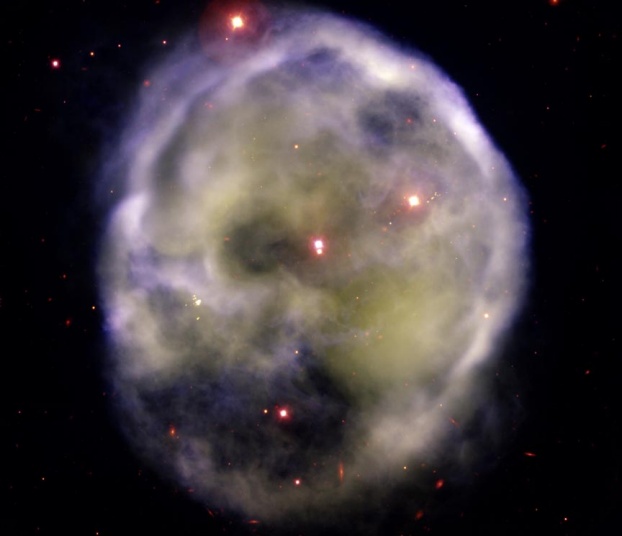
|
Explanation: Appropriately nicknamed "the Skull Nebula", planetary nebula NGC 246 really does surround a dying star some 1,600 light-years away in the constellation Cetus. Expelled over a period of thousands of years, the lovely, intricate nebula is the outer atmosphere of a once sun-like star. The expanding outer atmosphere is interacting with the gas and dust in the interstellar medium, while the star itself, the fainter member of the binary star system seen at the nebula's center, is entering its final phase of evolution, becoming a dense, hot white dwarf. Star and nebula are moving rapidly toward the top of the detailed view, as suggested by the nebula's brighter, upper, leading edge. The sharp image spans just over 2.5 light-years at the estimated distance of NGC 246 and also reveals distant background galaxies, some visible right through the nebula along the bottom.
|
January February March April May June July August September October November December |
| ||||||||||||||||||||||||||||||||||||||||||||||||
NASA Web Site Statements, Warnings, and Disclaimers
NASA Official: Jay Norris. Specific rights apply.
A service of: LHEA at NASA / GSFC
& Michigan Tech. U.
Based on Astronomy Picture
Of the Day
Publications with keywords: planetary nebula - binary star
Publications with words: planetary nebula - binary star
See also:
- APOD: 2025 August 31 Á NGC 7027: The Pillow Planetary Nebula
- APOD: 2025 August 22 Á A Tale of Two Nebulae
- APOD: 2025 August 5 Á NGC 6072: A Complex Planetary Nebula from Webb
- APOD: 2025 July 29 Á A Helix Nebula Deep Field
- APOD: 2025 July 13 Á Planetary Nebula Mz3: The Ant Nebula
- APOD: 2025 June 9 Á Between Scylla and Charybdis: A Double Cosmic Discovery
- APOD: 2025 May 14 Á NGC 1360: The Robins Egg Nebula
